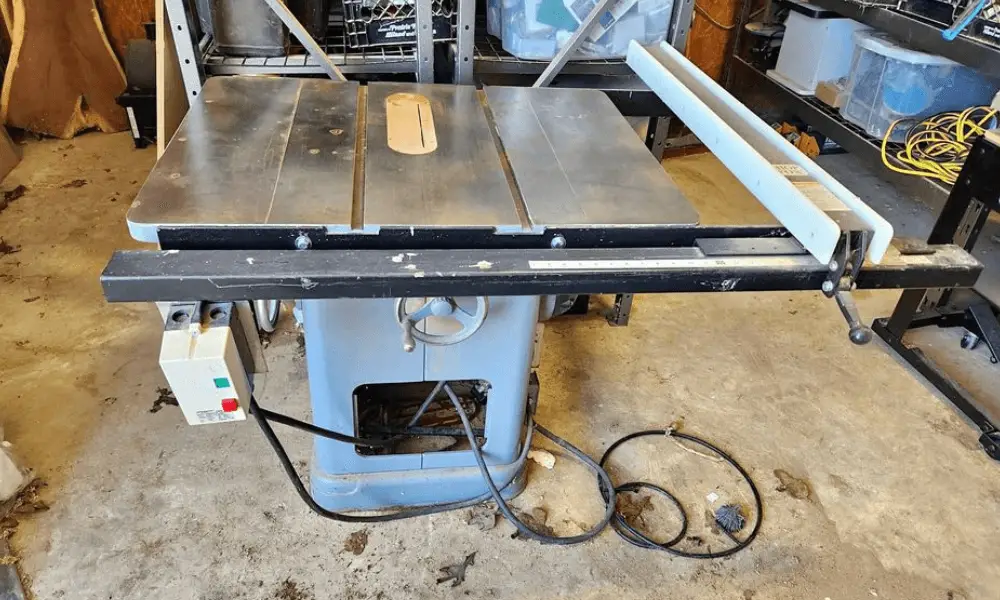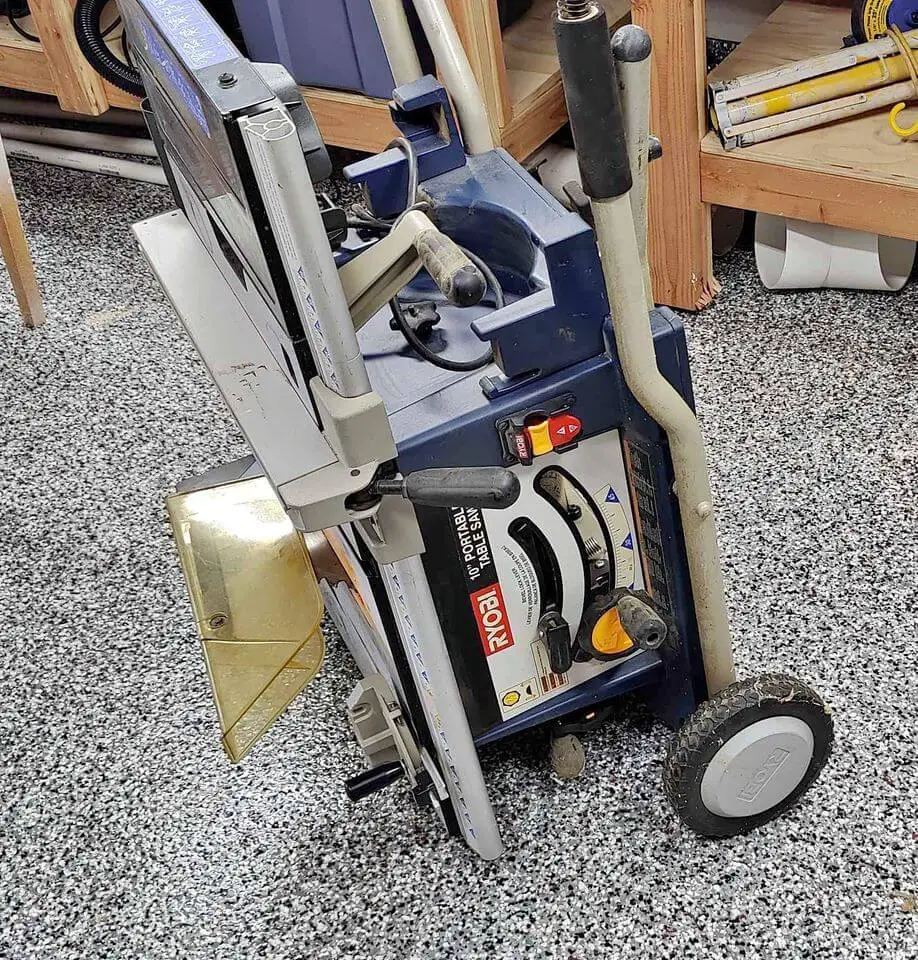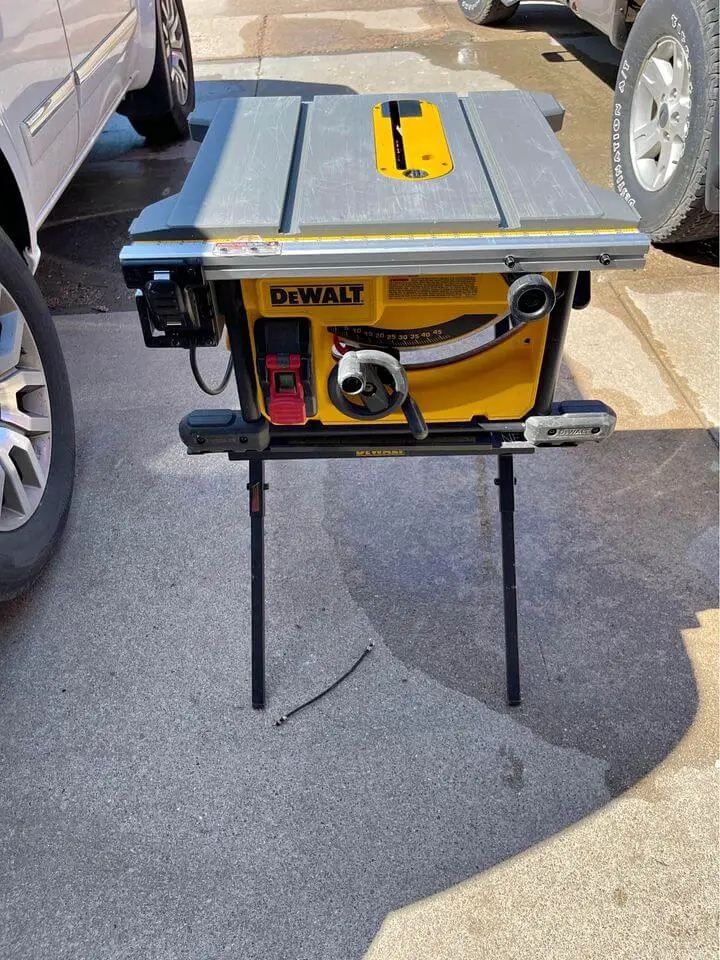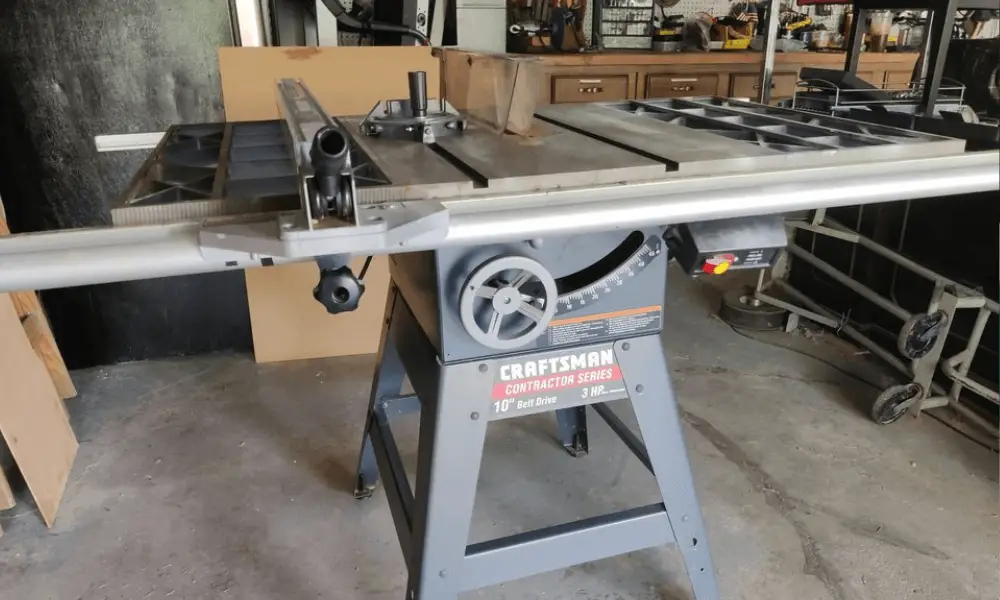Woodworking is a craft that has stood the test of time, and it requires a range of tools to bring projects to life. One such tool is the table saw, a versatile and powerful woodworking machine that is indispensable for both professional carpenters and hobbyists. In this article, we will explore the definition, features, types, uses, and safety precautions associated with table saws.
Related:
What is a Table Saw
A table saw is a woodworking tool that features a circular saw blade mounted on an arbor and driven by an electric motor. The blade protrudes through the top of a table, providing support for the material being cut, typically wood. This setup allows for precise and controlled cutting.
Table saws come with several key features that enhance their functionality:
- Saw blade mounted in a table: The circular saw blade is securely fixed within the table, ensuring stability during cutting operations.
- Fence for guidance: A fence, attached parallel to the saw blade, guides the workpiece as it is pushed through the cutting area. This helps maintain accurate and straight cuts.
- Miter gauge for angled cuts: A miter gauge allows the user to make precise angled cuts, such as miter and bevel cuts. This feature adds versatility to the table saw, expanding its range of applications.
- Dust collection system: To keep the work area clean and free from debris, many table saws are equipped with a dust collection system. This helps maintain a clear line of sight and reduces the amount of airborne sawdust.
Types of Table Saws
There are several types of table saws available on the market, each designed to cater to specific needs and requirements. The common types include:
Contractor Table Saws
- Features: Contractor table saws typically have a cast iron table top, a 10- to 12-inch saw blade, and a 1.5- to 2-horsepower motor. They often come with a variety of accessories, such as a miter gauge, a fence, and a dust collection system.

- Advantages: Contractor table saws are a good balance between power and portability. They are also relatively affordable, making them a good option for DIY enthusiasts and professional woodworkers on a budget.
- Disadvantages: Contractor table saws are not as durable as cabinet table saws. They also have a smaller cutting surface, which can be limiting for some woodworking tasks.
Read Next
• https://improvewood.com/table-saws-an-overview/
• https://improvewood.com/best-table-saw-for-small-shop/
• https://improvewood.com/best-ripping-blade-for-table-saw/
• https://improvewood.com/best-combination-table-saw-blade/
• https://improvewood.com/dws779-vs-dws780-miter-saw/
• https://improvewood.com/harvey-table-saw-vs-laguna/
Cabinet Table Saws
- Features: Cabinet table saws have a larger cutting surface than contractor table saws, and they are typically made with more heavy-duty materials. They also have more powerful motors, which can handle demanding woodworking tasks.

- Advantages: Cabinet table saws are more durable and accurate than contractor table saws. They also have a larger cutting surface, which makes them a good option for large woodworking projects.
- Disadvantages: Cabinet table saws are not as portable as contractor table saws. They are also more expensive, making them a better option for professional woodworkers.
Portable Table Saws
- Features: Portable table saws are the smallest and lightest type of table saw. They typically have a 7- to 10-inch saw blade and a 1- to 1.5-horsepower motor. Portable table saws often come with a folding stand or wheeled base for convenient transport.

- Advantages: Portable table saws are the most portable type of table saw. They are also relatively affordable, making them a good option for DIY enthusiasts who need a saw for occasional woodworking projects.
- Disadvantages: Portable table saws are not as powerful or durable as contractor or cabinet table saws. They also have a smaller cutting surface, which can be limiting for some woodworking tasks.
Jobsite Table Saws
- Features: Jobsite table saws are similar to portable table saws, but they are specifically designed for on-site use. Jobsite table saws often feature folding stands or wheeled bases for convenient transport. They also have more powerful motors than portable table saws, making them a good option for contractors who need a powerful and portable table saw for use on jobsites.

- Advantages: Jobsite table saws are a good balance between portability and power. They are also relatively affordable, making them a good option for contractors who need a saw for occasional woodworking projects.
- Disadvantages: Jobsite table saws are not as durable as cabinet table saws. They also have a smaller cutting surface than cabinet table saws, which can be limiting for some woodworking tasks.
Uses of Table Saws
Table saws are a versatile and indispensable tool in the world of woodworking. With their precision and power, they enable a wide range of tasks to be accomplished with ease. Let’s explore the capabilities of table saws and the exciting possibilities they offer.
Ripping: Cutting Along the Grain
Ripping is the process of cutting a board along the grain, resulting in pieces of uniform width. Whether you’re crafting shelves or dados, a table saw is your trusted companion. Set the fence to the desired width, guide the board through the saw blade, and watch as perfectly cut pieces come to life.
Crosscutting: Perpendicular to Perfection
Crosscutting involves cutting a board perpendicular to the grain, creating pieces of specific length. From door frames to trim, a table saw excels at achieving accurate cuts. Utilize the miter gauge to set the desired angle, feed the board through the saw blade, and witness precise crosscuts that fit your project flawlessly.
Miter Cutting: Crafting Angled Artistry
Miter cutting allows you to create stunning angled joints for picture frames or crown molding. Unlock your creativity with a table saw’s miter gauge, which enables precise angle adjustments. Align the gauge, guide the board through the saw blade, and marvel at the craftsmanship taking shape before your eyes.
Bevel Cutting: Embracing the Art of Angles
Bevel cutting involves cutting a board at an angle to the plane of the saw blade. This technique is perfect for crafting exquisite angled joints like dovetails or box joints. Tilt the saw blade to the desired angle, carefully feed the board through the saw, and witness the birth of beautifully angled connections.
Dadoing: Creating Grooves in Style
Dadoing is the process of cutting parallel grooves in a board, often used for crafting drawers or furniture components. With the help of a dado blade—a set of blades spaced apart to achieve the desired groove width—a table saw empowers you to create perfect grooves effortlessly.
Unleashing the Full Potential: Beyond the Basics of table saws
Table saws offer even more possibilities for woodworking enthusiasts:
- Joinery: From dovetails to mortise and tenon joints, table saws excel at creating various joints, ensuring both strength and visual appeal.
- Shaping: Rabbets, grooves, and chamfers are just a few examples of the shaping tasks that a table saw can accomplish. Let your imagination run wild as you customize the edges and profiles of your woodworking pieces.
- Routing: By attaching a router table to the saw, you can embark on exciting routing operations. Transform your projects with decorative moldings and captivating edge profiles, all with the precision of a table saw.
Safety First: Your Guide to Table Saw Mastery
While table saws offer tremendous potential, safety is paramount. Follow these safety tips for a worry-free woodworking experience:
- Always wear appropriate safety gear, such as eye protection and a dust mask.
- Keep your fingers away from the saw blade, utilizing push sticks or featherboards for guidance.
- Ensure the saw blade is properly aligned before making a cut.
- Choose the correct blade for each task, maximizing both efficiency and safety.
- Be mindful of the kickback hazard, taking preventative measures to avoid it.
By embracing safety measures and harnessing the capabilities of table saws, you can unlock your woodworking potential and embark on an exciting journey of creativity and craftsmanship. Let the table saw be your guide as you bring your woodworking projects to life, turning ordinary pieces of wood into works of art.
Safety Precautions
While table saws are incredibly useful tools, it is crucial to prioritize safety when operating them. Here are some essential safety precautions to follow:
- Personal protective equipment (PPE): Always wear safety glasses, hearing protection, and appropriate clothing to protect yourself from flying debris and noise.
- Blade alignment and fence setup: Ensure that the saw blade is properly aligned and securely mounted. The fence should be set to the correct distance from the blade to prevent kickbacks and ensure accurate cuts.
- Controlled feeding: Feed the workpiece into the saw blade slowly and carefully, maintaining control throughout the cutting process. Avoid forcing or rushing the material, as this can lead to dangerous situations.
- Push sticks and featherboards: When making cuts that require your hands to be close to the blade, use push sticks or featherboards to maintain a safe distance and keep your fingers away from the cutting area.
- Unplug and maintain: Always unplug the table saw before performing any maintenance tasks, such as blade changes or cleaning. Regularly inspect the tool for any damage or wear and address any issues promptly.
Choosing the Right Table Saw: Exploring Top Brands
When it comes to table saws, several brands have earned recognition for their quality and reliability. Let’s take a closer look at some of the top brands in the market and the range of options they offer.
DeWalt: A Trusted Name in Power Tools
DeWalt is renowned for its wide range of power tools, and their table saws are no exception. Whether you’re in need of a contractor saw, cabinet saw, or portable saw, DeWalt has a model to suit your needs. Their table saws are known for their durability and performance.
SawStop: Safety First
SawStop is highly regarded for its safety features, which include a blade brake that stops the saw blade within milliseconds if it comes into contact with flesh. In addition to their safety focus, SawStop offers high-quality table saws with a variety of features, ensuring both precision and peace of mind.
Delta: Established Excellence
With a long-standing presence in the industry, Delta has been manufacturing table saws for many years. They offer a range of models, from basic contractor saws to more advanced cabinet saws. Delta’s table saws are known for their reliability and solid construction.
Makita: Precision
Makita, a reputable brand, is synonymous with high-quality power tools. Their table saws are no exception and exemplify precision and durability. Makita offers a variety of models, including portable saws and cabinet saws, catering to different woodworking needs.
Bosch: A Popular Choice
Bosch, another well-known brand in the power tool realm, has gained popularity among woodworkers for its table saws. Their range includes contractor saws, cabinet saws, and portable saws, ensuring options for various requirements. Bosch table saws are known for their performance and reliability.
Additional Noteworthy Brands
In addition to the top brands mentioned above, other popular table saw manufacturers include Grizzly, Jet, and Powermatic. These brands also offer a range of models to choose from, providing options for woodworkers with diverse needs and budgets.
Choosing the Right Table Saw for You
When selecting a table saw, it’s important to consider your specific needs and budget. If you’re a serious woodworker seeking uncompromising performance, a cabinet saw might be the ideal choice. On the other hand, if you’re a hobbyist or have space constraints, a contractor saw could be a more practical option.
Carefully assess your woodworking requirements, desired features, and budget constraints to make an informed decision. Research customer reviews and consult with experts if needed to ensure you choose a table saw that meets your expectations.
Remember, investing in a reputable brand and a quality table saw will enhance your woodworking experience, provide long-term reliability, and support the realization of your creative visions
Conclusion
Table saws are an essential tool in the woodworking realm, offering precision, versatility, and efficiency. By understanding their features, types, uses, and safety precautions, woodworking enthusiasts can harness the full potential of table saws while ensuring a safe and enjoyable experience. Remember to prioritize safety at all times and enjoy the process of bringing your woodworking projects to life with this indispensable tool.
